2024 Toyota GR Supra Review: Please get the manual

Pros: It has a manual; playful and full of character; sweet engines; better-than-BMW steering and handling
Cons: Two seats only; antiquated tech; it’ll be too German for some; pricey compared to Nissan Z
The 2024 Toyota Supra is an excellent and entertaining two-seat sports car with a storied nameplate. If you were a Supra fan in the ’80s or ’90s, rest assured that the resurrected model lives up to the name. And, even better, it’s now available with a manual transmission. It’s a compelling and worthy competitor to the newly revamped Nissan Z and, due to its underpinnings, is also a great substitute to the BMW Z4.
Yes, its chassis, engines and transmissions are all sourced from BMW, and you’ll notice some similarities in the drive experience. But mostly the Supra feels like its own car, and most of what it shares with the Z4 is beneficial to the package. There are two powertrains — a 2.0-liter four-cylinder and a 3.0-liter inline six. Unfortunately, you can only pair a manual transmission with that upgrade engine, but you won’t regret doing so. And for 2024, the Supra offers a 45th Anniversary Edition with a manually adjustable spoiler and a number of aesthetic upgrades to help set it apart.
Regardless of which version of the Supra you choose, you’ll be blessing your garage with an athletic, agile and attractive sports coupe that you can’t help but love after your first couple turns in it.
Interior & Technology | Passenger & Cargo Space | Performance & Fuel Economy
What it’s like to drive | Pricing & Features | Crash Ratings & Safety Features
What’s new for 2024?
The big (and really only) news for 2024 is the addition of the 45th Anniversary Edition to the lineup. Based on the 3.0 Premium trim, it features a gloss black rear spoiler, 19-inch matte black wheels and a slick looking Supra stripe decal along the sides. This edition is available with either “Mikan Blast” orange or “Absolute Zero” white. Yes, you can get it with the manual transmission.
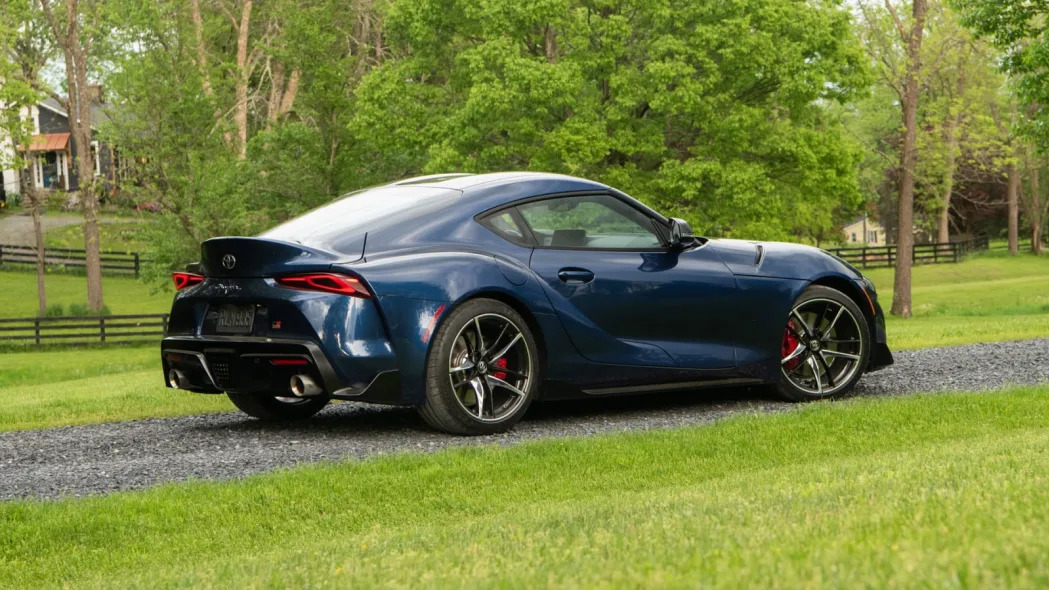
What are the Supra’s interior and in-car technology like?
Toyota was basically handed a box of BMW buttons, knobs and screens, and then used it all to create a cabin that’s indeed stylistically different from its BMW Z4 platform-mate. The materials quality is not quite up to a BMW standard, but the Supra also costs considerably less and is still to an acceptable standard for its price point. To that point, the cabin is also of a higher quality than that of the cheaper Nissan Z.
Although the instrument panel screen features Supra-specific graphics and is surrounded by a unique frame integrated with fuel and temperature gauges, what you see on the standard 8.8-inch infotainment display is pure BMW – and more specifically, BMW from a few tech generations ago. The center console knob controller and surrounding menu buttons are identical to what you would’ve found in a 3 Series five years ago. It generally works OK, but it’s not the easiest system to use and we had the same sort of Bluetooth and Apple CarPlay connectivity issues as we’ve previously had with BMWs. But at least CarPlay exists. Android Auto is not available at all. An actual Toyota system would be superior.
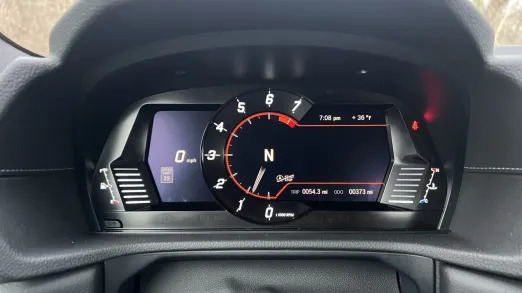
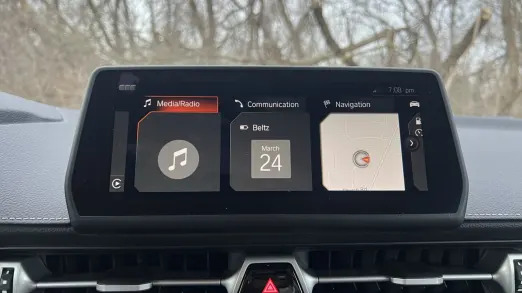
How big is the Supra?
The Supra is quite small. Its wheelbase (97.2 inches) and length (172.5) are virtually identical to the new Nissan Z’s. Like that car and unlike past Supras, it seats only two, albeit with sufficient space for someone taller than 6 feet. Its narrow, 10.2-cubic-foot cargo area can handle weekend getaway luggage (we somehow managed to stuff four bags inside). We’ve yet to test out the new Z’s cargo area, but we expect the Supra to have a slight edge given the Z’s smaller, 6.9 cubic feet cargo volume. Neither is nearly as capacious as Mustang trunk, nor the dual trunks of a Corvette.
One space-related element to consider are the seats. They’re the same in the 2.0 and 3.0, but only the latter has eight-way power seats, which means you may only be comfortable in the pricier model. The seats also can’t be heated in the base model.
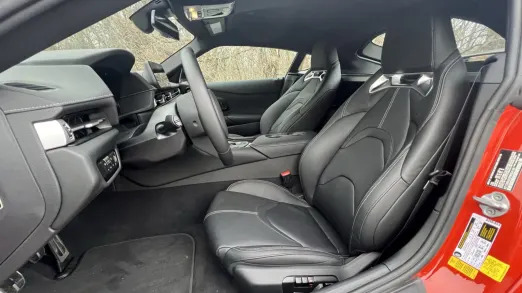
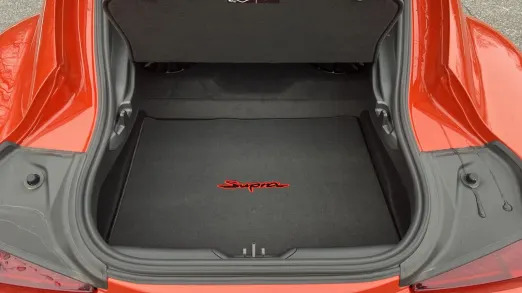
What are the Supra’s fuel economy and performance specs?
The base Supra 2.0 packs a 2.0-liter turbocharged inline-four by BMW that’s good for 255 horsepower and 295 pound-feet of torque. Like every Supra, it comes only with rear-wheel drive. Toyota says it’ll go from 0-60 mph in 5 seconds, which is mighty quick, and basically the same as the base Porsche 718 Cayman. The BMW Z4, which has the same engine, is just a hair slower. As for fuel economy, it is rated at 25 miles per gallon city, 31 mpg highway and 27 mpg combined.
The Supra’s 3.0-liter turbocharged inline-six remains the upgrade engine and it’s the only one available with another exciting upgrade: a six-speed manual transmission. It produces 382 hp and 368 lb-ft of torque, and can take the Supra from 0-60 in 3.9 seconds with the eight-speed auto, or 4.2 seconds with the manual. It feels every bit as quick as that sounds behind the wheel while sounding sensational doing it. Fuel economy for the automatic is just a tad behind that of the 2.0, at 23/31/26 mpg. The 3.0 with the manual transmission takes a sizeable hit, getting 19/27/21 mpg.
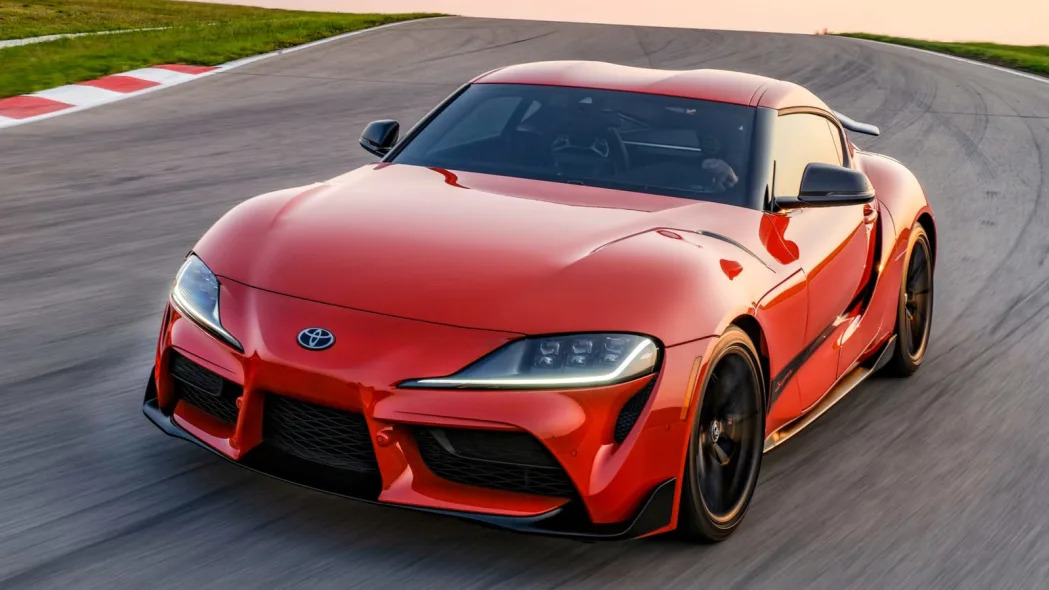
What’s the Supra like to drive?
You can feel the Supra’s size (or lack thereof) from the driver seat. The beltline is high, the greenhouse short and the clamshell hood stretches out before you, but it doesn’t overwhelm as similar long-hood/short-deck cars like a Mercedes-AMG GT can. It’s also balanced, with a 50:50 weight distribution that’s pretty much written into anything with Bavarian DNA, and possesses an eagerness to turn in smartly and rotate around you. Through longer arcing turns, you can feel what the car is doing through the seat of your pants and can steer with the responsive throttle. Along those lines, you can wag its tail and slide a bit when in Sport mode and with the traction control off. Shut stability control off and it’s possible to easily coerce and then hold a full-blown smoky slide. The steering, meanwhile, is excellent and actually a much more responsive, communicative effort than BMW achieves with theoretically the same componentry.
We like the six-speed manual transmission. It moves through ratios with a gentle guide from your thumb or forefingers, but possesses enough heft and slots into gear with enough resistance to feel appropriate for a sports car’s manual transmission. Perhaps the best way to describe it is the midpoint between a BMW and a GR86 gearbox. It’s quite good. That said, it is a smidge slower than the automatic, with Toyota clocking its 0-60 time at 4.2 seconds as opposed to the AT’s 3.9. Oh darn.
Not surprisingly, things are dialed down with the four-cylinder. It’s still quick, but obviously quite a bit slower. Its exhaust still sounds cool (unlike BMW, Toyota does not employ fake engine noise through the speakers), but it’s also not the same as the inline-six. And without the 3.0’s limited-slip differential and adaptive suspension, the four-cylinder Supra just doesn’t handle as well, even though there’s less weight atop the nose and elsewhere. It also has less powerful brakes, and, without the adaptive suspension, doesn’t ride as comfortably as the Supra 3.0.
As such, the more powerful Supra is most definitely the better one to drive and being paired with an inline-six just feels right in this car, especially considering the availability of the manual transmission, However, for the money, and relative its minimal competition, the four-cylinder model is still a compelling performance machine.
What other Toyota Supra reviews can I read?
2023 Toyota Supra Manual First Drive
We had been waiting for a version of the Supra with the manual transmission, and it doesn’t disappoint.

2023 Nissan Z vs. 2023 Toyota GR Supra Comparison Test Review
We put the Supra head-to-head with the new Nissan Z, and find the Toyota to be the better all-around sports car.
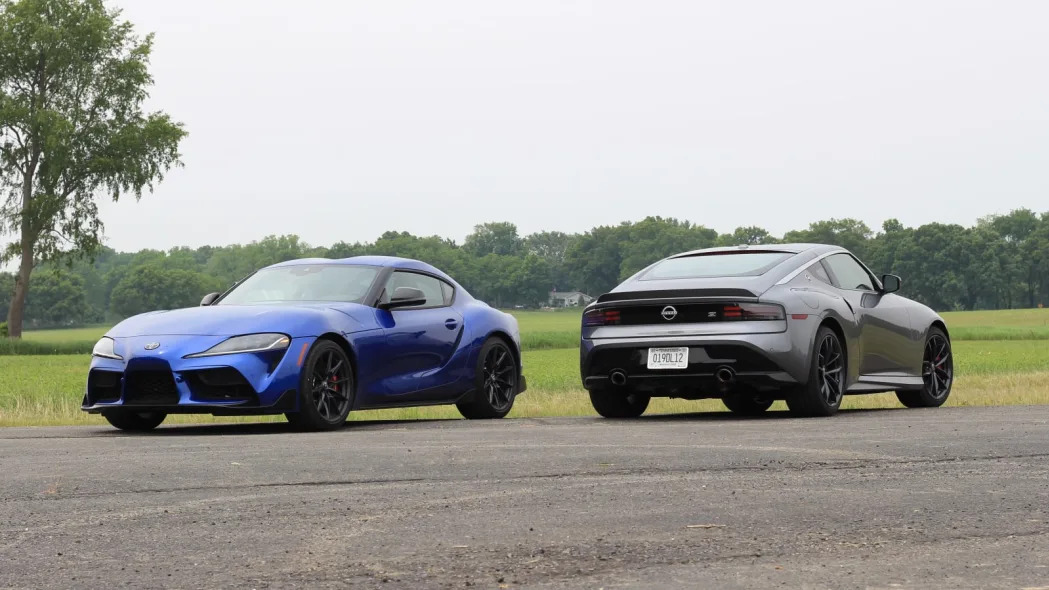
2021 Toyota GR Supra First Drive
Driving both the 2.0 and revised 3.0 models for the first time, including more in-depth info about the then-new 2.0-liter four-cylinder.
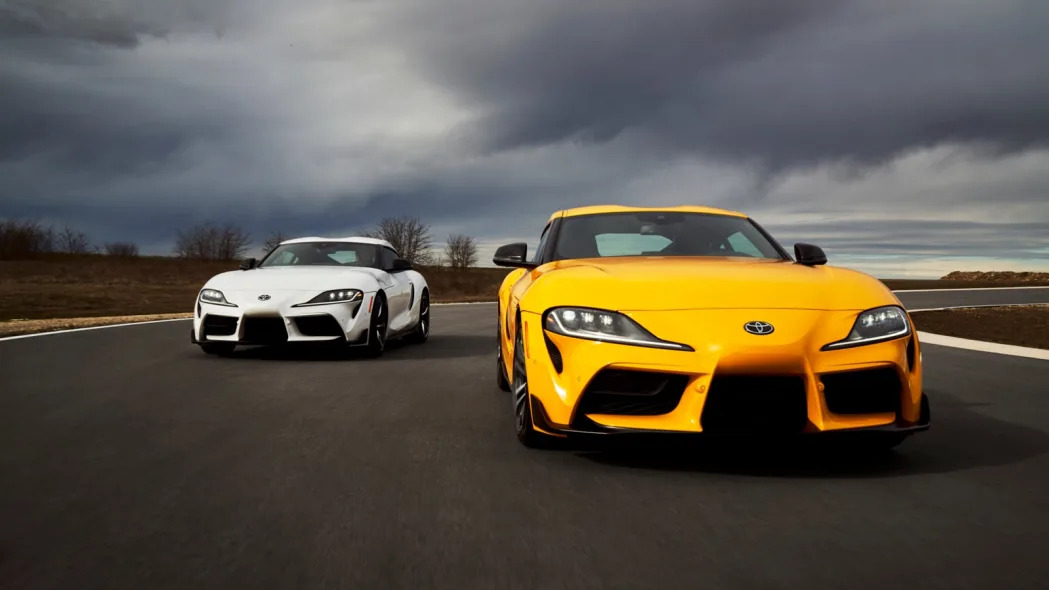
2021 Toyota Supra 2.0 Road Test
The 2.0-liter turbocharged four-cylinder engine is powerful enough, but it doesn’t stir the soul like it should.
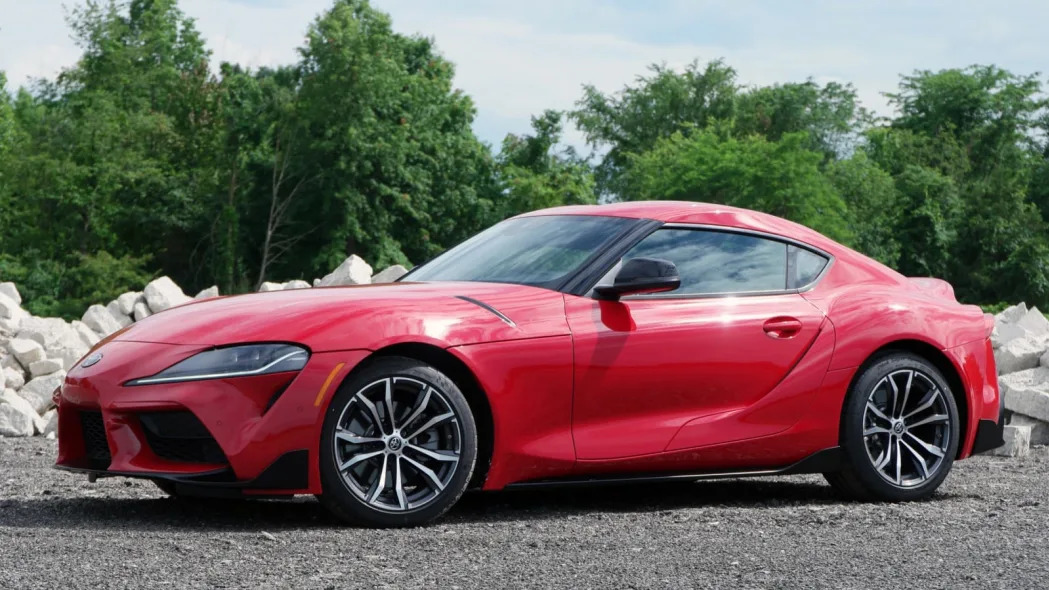
2020 Toyota Supra First Drive
Our original review of the Supra, including the most in-depth information about its engineering, design and relationship with BMW.

Toyota Supra Suspension Deep Dive
Take a look underneath the Supra with engineer Dan Edmunds to see how its suspension works.
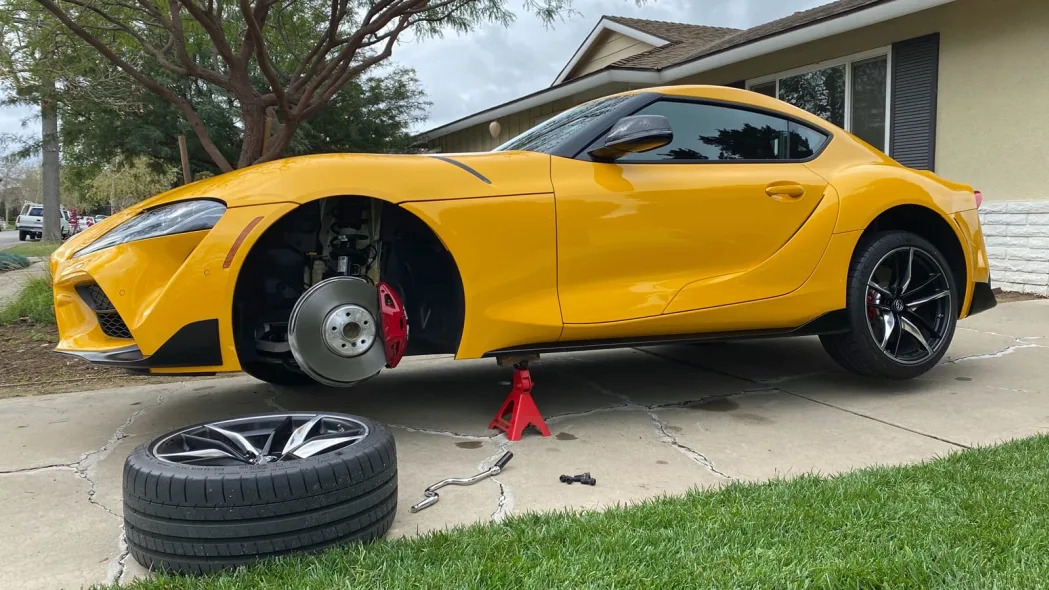
Toyota GR Supra vs. BMW Z4 Comparison Drive
Contributing writer Lawrence Ulrich takes back-to-back drives in the 2020 Supra and its BMW Z4 platform-mate to determine which company did the better job creating a sports car out of ostensibly the same parts.
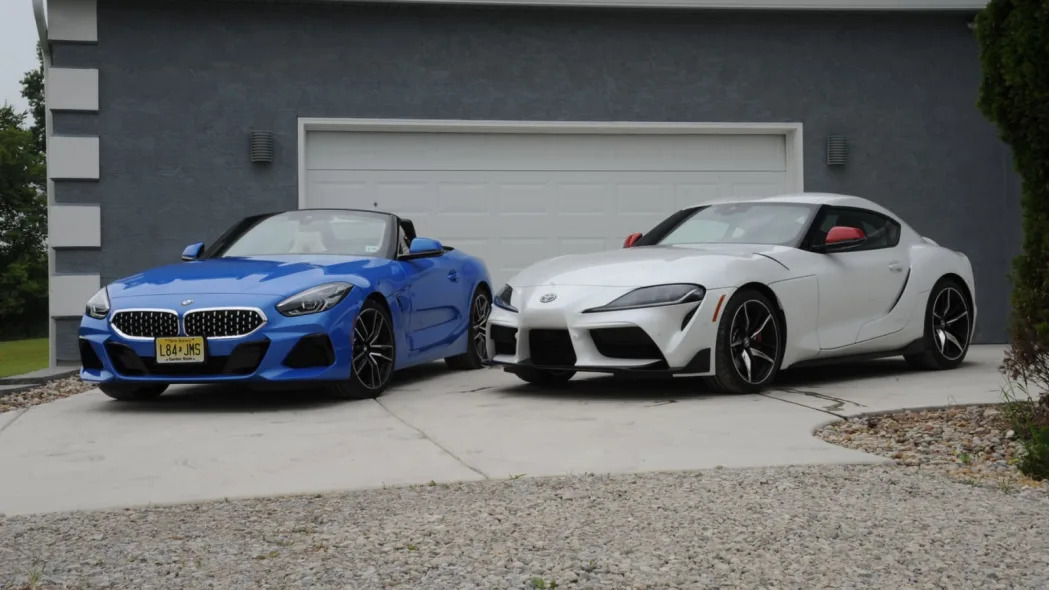
2020 Toyota Supra Road Test
We drive the Supra in the real world during a week-long road test at our Michigan headquarters.
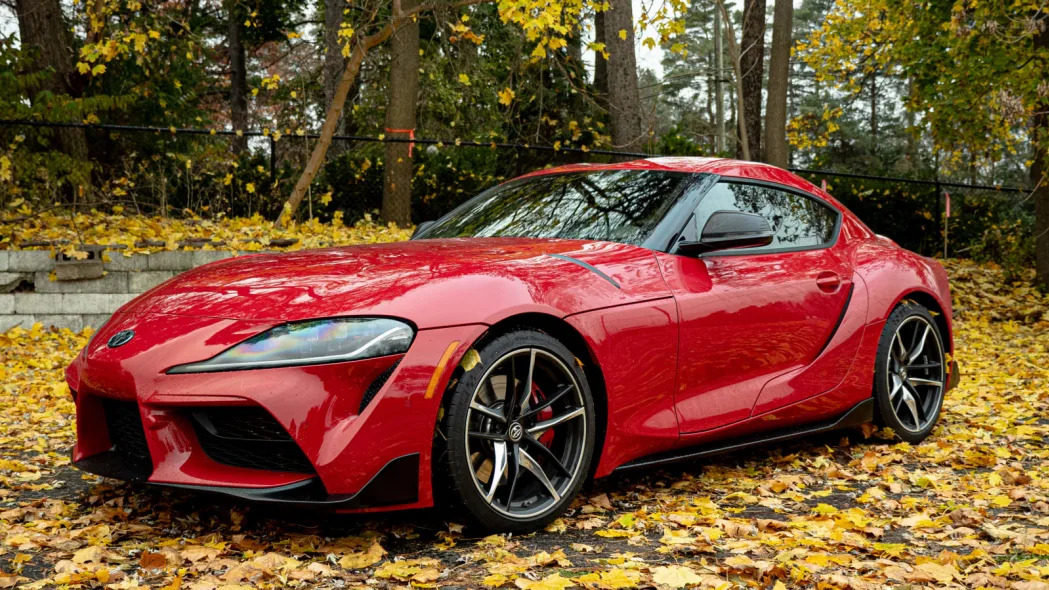
Toyota Supra Luggage Test
We find out how much luggage you can fit inside the Supra for a weekend getaway (and are very surprised by the answer).
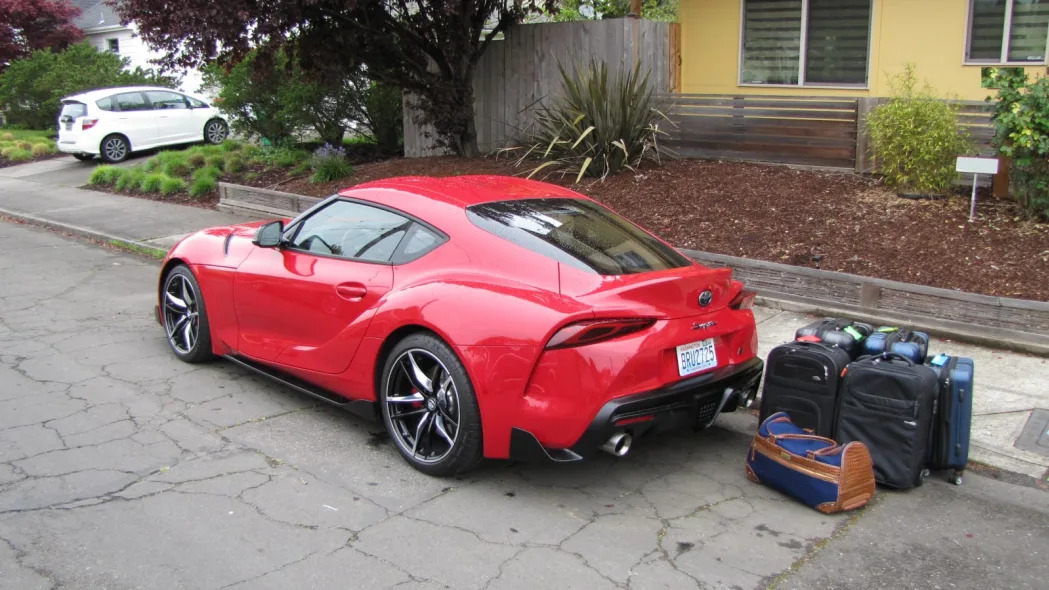
What is the 2024 Supra’s price and what features are available?
The 2024 Supra 2.0 starts at $47,535, including the $1,025 destination charge, which is $9,000 less than the more powerful Supra 3.0. You don’t just get a bigger engine with that, though. Starting at $56,495 (with either the automatic or manual transmission), the Supra 3.0 also adds Brembo disc brakes, 19-inch forged aluminum wheels, adaptive suspension dampers, a limited-slip differential, power-adjustable seats, and a 10-speaker sound system. A Premium version ($59,645) adds more luxury equipment.
The 45th Anniversary Edition ($66,370) is based on the 3.0 Premium, and has 19-inch matte black forged aluminum wheels, a manually adjustable rear spoiler, black “Supra” side graphic, orange strut tower braces and black brake calipers.
What are the Supra’s safety ratings and driver assistance features?
Every Supra includes standard forward collision warning with pedestrian detection and automatic emergency braking, lane-keeping assist and auto high beams. The Premium trim’s (with the automatic transmission) Driver Assist package adds adaptive cruise control, blind-spot and rear cross-traffic warning systems and parking sensors that can activate the standard emergency auto braking system. These features are also included in the base 2.0 and 3.0’s Safety & Technology package that also adds the Premium’s infotainment extras.
The Supra has not been crash tested by a third party.
Related video:







